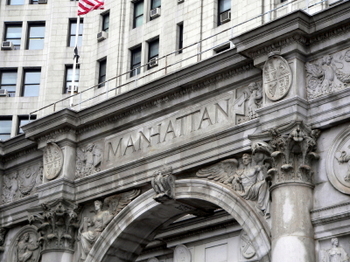
Law promises to promote transparency and encourage technological innovation.
Governing the country’s largest city requires massive amounts of information. Now, New York City is trying to make big data from the Big Apple open and accessible online.
Public Law 11, which the New York City Council passed and Mayor Michael Bloomberg signed into law last year, is a significant step forward for open government. By putting broad sets of data on a centralized online platform—ranging from information on wi-fi hotspot locations to neighborhood electricity usage—the city seeks to make local government more transparent and accountable. The city also intends for the open data initiative to spur innovation and economic growth.
Last month, Public Law 11 required city agencies to transfer all data already available on their own websites to the central portal. By September 2013, each agency must submit a plan for compliance with the law’s broad requirement to make all available public data accessible by 2018.
The law defines public data as any set of collected information that is “available for inspection by the public.” Information that is protected by other laws—including individual employees’ documents, employment records, and other private information—is not considered “public data” and will not be made accessible under Public Law 11.
Agencies must both format data sets to be machine-readable and update them frequently. These steps will likely increase the information’s usefulness. In the past, some data may have been available, but they reportedly proved difficult to utilize. As Patrick Markee of the Coalition for the Homeless told a local news source, “We’ve managed to obtain that data over time, but that’s literally because we have staff and interns here sitting with paper reports from the ’80s, hand-entering the data. That’s a workaround solution.”
Since the central portal launched, users have viewed the portal’s most popular data set, wifi hotspot locations, more than 30,000 times. Other popular information includes demographic statistics by zip code, building footprints, and hurricane evacuation zones. More than 1,800 separate data sets are already available on the website.
City officials encourage members of the public to use an online request feature to request new information they would like the city to provide. Officials often publicly respond to these requests. In one instance, an iPad app developer requested searchable and current neighborhood-specific data on crime rates. Although a New York City employee posted a response that no such official data set was available on the portal, he provided a link to New York Police Department data in PDF form.
The city’s Department of Information Technology & Telecommunications touts the new open data initiative as a way to make municipal governance more “open and transparent.” Through the open data portal, concerned citizens, journalists, scholars, and non-governmental organizations are able to access data to challenge the city to provide services more fairly and effectively.
But New York City also sees the open data portal as a way of boosting growth in local technology companies. City employees pitched the benefits of the open data site to the local tech community as a resource for mobile apps and other uses. The open data site may strengthen the city’s broader initiative to attract and retain tech startup companies.
New York City’s open data efforts are unique for their scope and ambition, but they are not unprecedented. In 2010, following a mayoral pilot project, San Francisco became the first major city to pass a similar ordinance. In its first year, the San Francisco open data website helped spur the creation of more than fifty apps and websites drawing on the released information. The San Francisco government highlights popular and innovative apps that use its information, including CrimeReports, which displays daily updated crime data using Google Maps, and RailBandit, which compiles frequently updated train schedules for local transit and commuter rail.
New York City Council member Gale Brewer pointed to the federal Open Government Initiative, which the Obama administration advertised as a way of encouraging citizen participation, protecting taxpayer dollars, and reducing special interest influence, as a model for the city’s legislation. Yet Brewer noted that unlike the Obama administration’s Data.gov website, it was “good” that New York created its open data website through legislation “because an executive order is only as good as that administration.”



